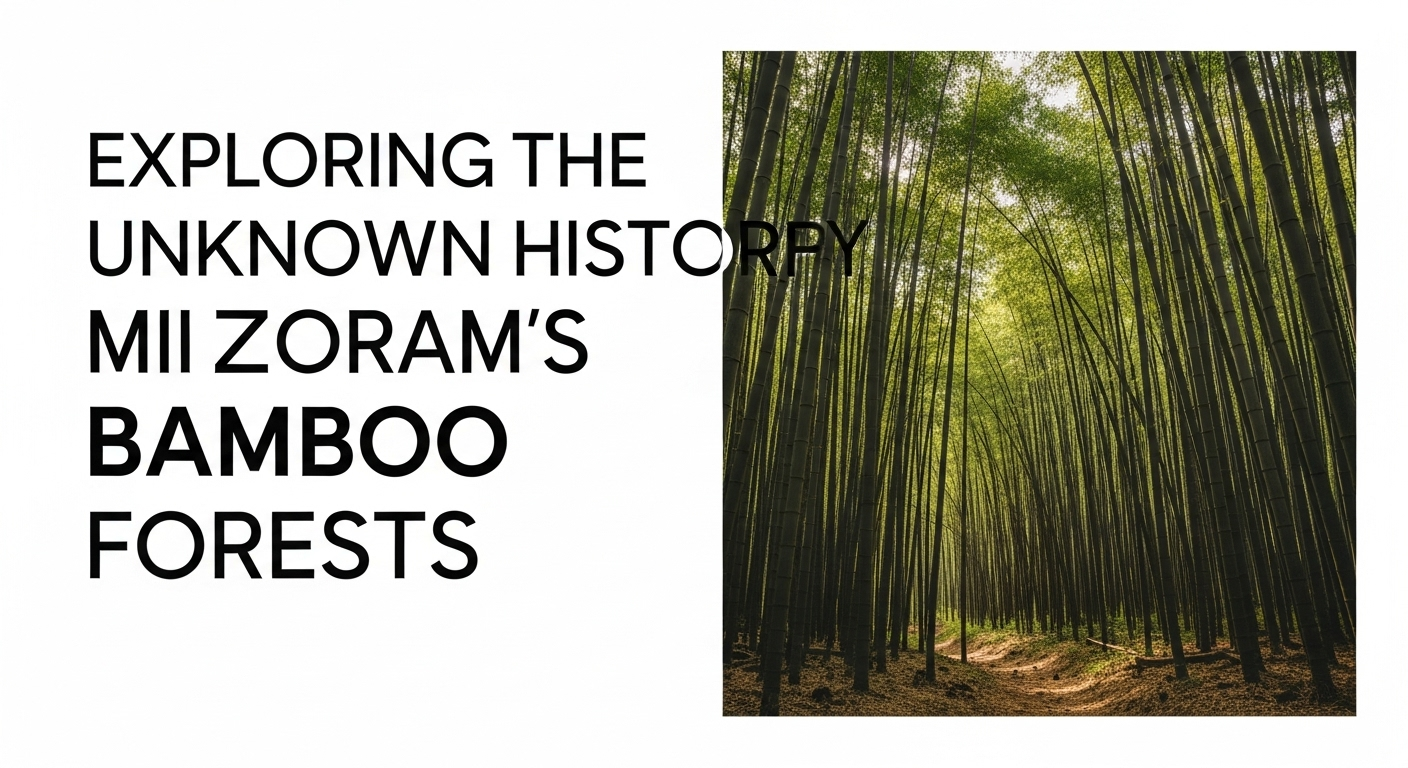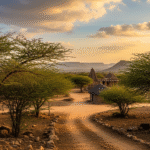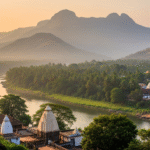Mizoram is home to over 50 kinds of bamboo. This makes it a world leader in bamboo variety. The unknown history of Mizoram’s Bamboo Forests ties closely with nature and the tribes’ cultures. These forests are key for both nature and the Mizo people’s way of life. Bamboo is used for building and in traditional practices. Mizoram’s hidden past is a big part of its nature and culture. It shapes the area’s identity and future.
As Mizoram grows, keeping its bamboo traditions is crucial for the next generations. Bamboo stands out for its growth in diverse places and its symbol of strength. Learning about these bamboo forests tells us a lot about Mizoram’s rich history and culture.
To know more about Mizoram’s importance in ecology and culture, check out resources like Britannica.
Key Takeaways
- Mizoram is home to a rich diversity of bamboo species.
- The bamboo forests play a critical role in local ecosystems.
- These forests have a profound impact on traditional Mizo culture and livelihoods.
- Bamboo serves multiple purposes, from construction to arts and crafts.
- Preservation of bamboo forests is vital for cultural heritage and ecological balance.
- The connection between bamboo and Mizo identity is deeply rooted in historical narratives.
The Ecological Significance of Mizoram’s Bamboo Forests
The importance of bamboo in Mizoram is huge. These forests are home to many plants and animals. This helps increase biodiversity. Mizoram’s Bamboo Forests are also key for the area’s ecosystem.
Bamboo is also great for keeping soil in place. It has deep roots that prevent soil from washing away. The area’s high rain and humidity help bamboo grow. This keeps the soil healthy and stable.
Bamboo helps fight climate change too. It takes in CO2 as it grows. This reduces the impacts of climate change. Bamboo’s ability to store carbon shows its value for the environment.
Bamboo boosts water in the soil. This is good for farms next to these forests. By keeping more water in the ground, bamboo helps farmers. This shows how bamboo forests and farming benefit each other.
In short, Mizoram’s Bamboo Forests do more than just look nice. They help with biodiversity, soil, and carbon capture. Saving these forests is important for the environment and nearby communities.
The Diversity of Bamboo Species in Mizoram
Mizoram’s Bamboo Forests have a diversity of bamboo species. It’s known for its rich biology. Many bamboo types are only found here. Examples are Melocanna baccifera, Dendrocalamus hamiltonii, and Bambusa balcooa.
These bamboos are used in many ways. From building things to eating bamboo shoots. The variety has many uses.
Mizoram’s bamboo shows unique ecological features. Endemic species make up a big part of its bio-diversity. Surveys show a high number of bamboo types per area. This beats many places nearby.
This richness means a healthy environment. It also shows a good balance in nature.
Knowing about bamboo diversity helps save it. We learn how bamboos grow and how dense they are. This info leads to good forest care. It helps the economy and saves nature in Mizoram.
Unknown History of Mizoram’s Bamboo Forests
Mizoram’s Bamboo Forests have a hidden story. They are very important to the environment and local tribes. Bamboo grows well here and helps keep things balanced. It helps many living things survive together.
The Role of Bamboo in Local Ecosystems
Bamboo is great at adapting. It can do a lot of good things for its home. It gives animals a place to live and food to eat. This helps there be many different kinds of life. Bamboo looks nice, but it does more. It keeps the soil in place and stops it from washing away. It also grows fast, giving us lots of resources without hurting the planet.
Historical Uses of Bamboo by Local Tribes
The tribes of Mizoram really depend on bamboo. They have used it to make all sorts of things. They make tools, items for eating, and materials for weaving. Local artists are great at using bamboo. They make everything from baskets to instruments. This shows how important bamboo is to their culture. It tells us about their deep traditions.
This story mixes Mizoram’s Bamboo Forests’ unknown past with traditions. It shows why we should keep these places safe. Learning about bamboo helps us understand the culture and the land better. To learn more about forests and their role, you can look at forest distribution questions and answers.
| Bamboo Uses | Description |
|---|---|
| Crafting Utensils | Bamboo is used to create various eating and cooking utensils, showcasing local craftsmanship. |
| Musical Instruments | Traditions include crafting instruments which play significant roles during cultural festivals. |
| Building Materials | Utilized for constructing homes and shelters due to its strength and lightweight properties. |
| Weaving Materials | Bamboo strips are woven into mats, baskets, and decorative items, reflecting artistry. |
Traditional Practices and Bamboo Cultivation
Bamboo farming is very important in Mizoram. It mixes well with their old ways. Jhum farming is one such practice that helps bamboo and the land. It involves clearing forests to farm. This helps bamboo grow naturally again. People use the bamboo for many things. It shows how crucial it is for them.
Jhum Cultivation and Its Impact on Bamboo Growth
Jhum farming means clearing land, burning it, and then planting. This makes bamboo grow better. Clearing land lets more light hit the ground. This is perfect for bamboo shoots. So, bamboo helps keep the soil good and adds to the area’s green life.
Cultural Festivals Celebrating Bamboo
Bamboo festivals are a big deal in Mizoram. One important festival is Chapchar Kut. It ends the farming cycle and Jhum farming. The celebration is full of old traditions about bamboo. There are dances like the Bamboo Dance. People also wear clothes made by hand. This shows how bamboo farming and local culture are linked.
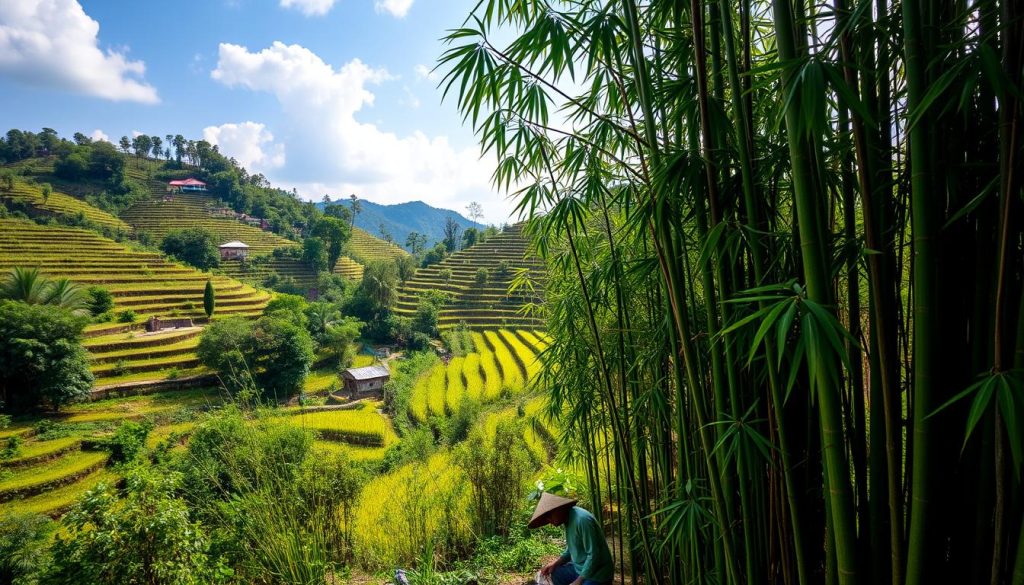
At Chapchar Kut, music adds to the fun. Traditional songs are played on instruments like the Khuang. People get together to eat foods made with bamboo shoots. This shows off Mizoram’s rich culture and bamboo’s role in it. Bamboo is more than just a plant here. It’s part of their heritage and identity.
Mizoram’s Bamboo Forests and Climate Change
Mizoram’s bamboo forests are facing big challenges because of climate change. Rising temperatures and less predictable rain are harmful. These forests are very important for many animals and people’s jobs.
Bamboo is great at dealing with climate change. It grows fast and can take in a lot of carbon. This helps fight climate change. Bamboos also stop soil from washing away and reduce flooding.
We need to tell people how important bamboo is in fighting climate change. Everyone needs to know how these forests help us. By using bamboo wisely, we can meet our needs without hurting the environment.
Historical Accounts of Mizoram’s Bamboo Forests
Bamboo in Mizoram has a long story. It touches the lives of local tribes deeply. For the tribes, bamboo is more than just a plant. It’s part of their way of life and work. We see how bamboo shapes their culture and economy.
Influence on Tribal Lifestyles and Livelihoods
In Mizoram, bamboo is very important. It links tribes to their land in special ways. History shows many uses of bamboo like:
- Construction: Bamboo is a main material for making homes. It’s strong yet flexible.
- Craftsmanship: People make various tools and artworks from bamboo. This helps the local economy.
- Cultural Practices: Bamboo is part of many traditions and festivals. It shows its value in tribal culture.
- Food: Tribes use bamboo shoots in their cooking, adding to their food variety.
Bamboo helps make clothes, tools, and houses. It keeps the economy going. The Chapchar Kut Festival is one example. It celebrates bamboo’s cultural role. This event also marks an important farming time called Jhuming.
Even as the world changes, bamboo remains vital in Mizoram. Its history helps keep traditional ways alive. Bamboo strengthens Mizoram’s culture in many ways.
| Usage of Bamboo | Description |
|---|---|
| Construction | Utilized for building homes and structures |
| Craftsmanship | Crafting of tools and art pieces |
| Cultural Practices | Involvement in ceremonies and festivals |
| Food | Ingredient in traditional dishes |
Conservation Efforts for Bamboo Forests in Mizoram
Mizoram is working hard to keep its bamboo forests healthy. They’re saving the environment and culture. There are many plans to save and fix these important places with people’s help.
Making sure bamboo cutting is done right is key. It helps the forests stay alive. By cutting bamboo carefully and planting more, we keep bamboo ready for future use. This also helps people living there make a living.
Groups are teaching locals how to save bamboo. They use workshops to share smart ways to take care of the forests. This makes people feel they own part of the forest. They want to protect it.
| Conservation Initiative | Description | Impact |
|---|---|---|
| Community Workshops | Education on sustainable bamboo practices. | Increased local participation in conservation efforts. |
| Regulated Harvesting | Implementation of guidelines for bamboo harvesting. | Improved forest health and regeneration rates. |
| Replanting Programs | Efforts to replant bamboo in degraded areas. | Enhanced biodiversity and ecosystem resilience. |
Saving bamboo forests in Mizoram is very important. Working together and using the right bamboo practices looks hopeful. It’s how we keep the region’s natural beauty alive.
The Future of Bamboo Forests in Mizoram
The future of bamboo forests in Mizoram is very important. The area is facing many challenges. These include deforestation, changes in the climate, and economic issues. It’s important to tackle these problems. This will help keep the valuable bamboo forests safe. They are key for local jobs and the environment.
Challenges Faced by Bamboo Ecosystems
Some big problems are hurting bamboo forests in Mizoram:
- Deforestation due to farming growing and cities expanding.
- Climate change, which changes how bamboo grows and spreads.
- Economic pressures that lead to taking too much bamboo.
These issues threaten the balance of nature. They might hurt efforts to save bamboo forests. Right now, these forests are about 6,100 square kilometers. They help around 70% of rural families live.
Potential Benefits of Bamboo for Sustainable Development
Bamboo is great for sustainable development. It grows fast and can be used in many ways. Mizoram makes about 150,000 metric tons of bamboo each year. This shows bamboo has a big potential. Bamboo farming is growing by 15% each year. This is good news for the bamboo business. Focusing on bamboo products can help local economies. It can make people’s lives better and help take care of nature.
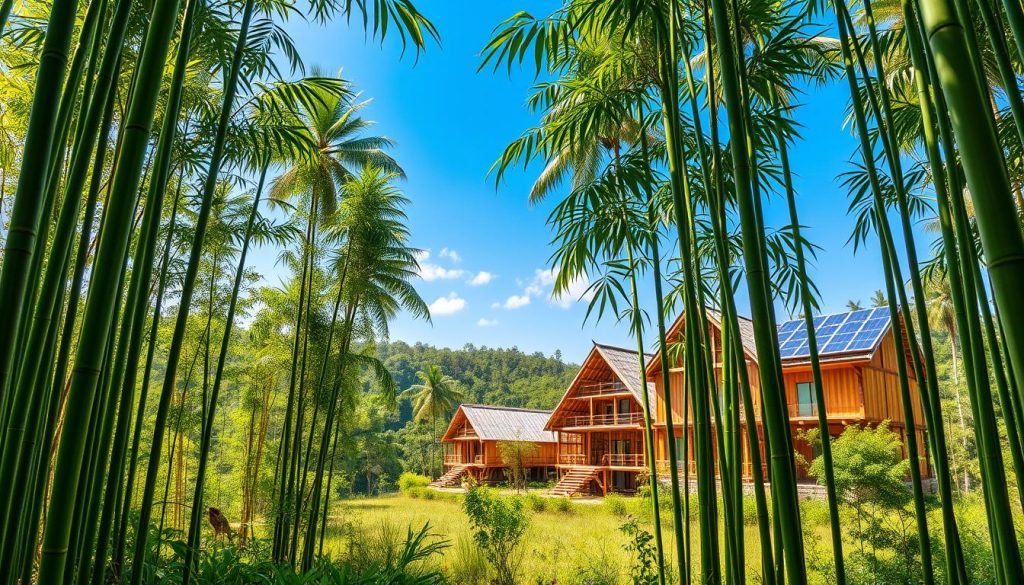
By following sustainable ways and focusing on bamboo crafts, Mizoram can protect its bamboo forests. They can stay beautiful and useful. Overcoming these challenges will help unlock their full promise.
Conclusion
Mizoram’s bamboo forests are very special. They are key for the environment, economy, and culture. These forests do more than you might think. They help nature and give people ways to make a living, like with jhum farming.
Working together is needed to keep these forests safe. Local people and officials need to act together. This will help save these important places and their history.
Educating people about bamboo is important for a green future. Sharing stories about its uses and special events, like Chapchar Kut, is key. This keeps old traditions alive. It also helps save the diverse plants and animals of the forests.
We should show respect for the past while protecting Mizoram’s bamboo for the future.
Keeping the bamboo forests safe is a big part of growing in a good way. It brings many good things for nature and people. By understanding these forests better, communities can look after them. This way, these beautiful forests can keep thriving, even as things change around them.
FAQ
What is the ecological significance of Mizoram’s Bamboo Forests?
Mizoram’s Bamboo Forests are very important for the environment. They provide homes for many species. They also help in soil conservation and prevent erosion.
These forests help with carbon sequestration too. This means they play a role in fighting climate change.
What are some endemic bamboo species found in Mizoram?
Several unique bamboo species grow in Mizoram. Important ones include Melocanna baccifera, Dendrocalamus hamiltonii, and Bambusa balcooa. These species are used in many ways, like building materials and food.
How does traditional Jhum cultivation impact bamboo growth?
Traditional Jhum cultivation leads to more bamboo. It starts by clearing forests. Then, bamboo grows back stronger, adding more to the ecosystem.
What cultural significance does bamboo hold in Mizoram?
Bamboo is very important in Mizoram’s culture. It’s part of big festivals like Chapchar Kut. People use it in traditional clothes, food, and dances, showing its role in their heritage.
What are the main challenges facing Mizoram’s Bamboo Forests?
The main problems are deforestation, climate change, and economic pressures. These issues put the bamboo forests at risk. That’s why it’s important to work on saving them.
How do bamboo forests contribute to climate resilience?
Bamboo forests are great at fighting climate change. They grow quickly and absorb a lot of carbon. This helps protect against the effects of climate change, like high temperatures and uneven rain.
What initiatives are in place for the conservation of bamboo forests in Mizoram?
There are many efforts to keep bamboo forests safe. These include smart harvesting and planting more bamboo. Groups work with locals to teach and support saving these forests. They want to keep their benefits for the environment and culture.
Why is understanding the history of bamboo important for local communities?
Knowing about Mizoram’s bamboo forests helps locals and leaders understand their value. This includes their role in nature, the economy, and culture. It’s about keeping these important places safe for the future.
